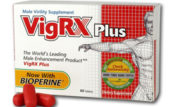Digestion problems like diarrhea and constipation are more than just uncomfortable. Diarrhea can cause dehydration, and even death. Estimates suggest that diarrhea claimed over 2.5 million lives in 2009, and half of them in children under five. And constipation? While it doesn’t kill, the pain of a slow bowel movement can be harsh beyond words.
The prevalence of digestion problems shouldn’t come as a surprise. Today’s lifestyle, with its emphasis on fast food and 24 hour convenience doesn’t lend itself to health or nutrition. And yet, there’s an obvious solution to problems with digestion that remains overlooked. Fiber can ease digestion problems, and minimize the pain and inconvenience they cause.
Fiber’s Role in Digestion
Fiber regulates the digestive system and alleviates problems of the digestive tract.
Constipation occurs when food moves too slowly through the large intestine, making stool that’s difficult to pass. High fiber foods hasten the process. They also absorb water more readily, which softens stool and make transit more comfortable.
Conversely, diarrhea happens when undigested food moves too quickly, before the intestines can absorb water, resulting in loose stools. Fiber allows for easier stool passage, by slowing transit time, which allows the intestines to absorb more water. Fiber also binds food together, reducing diarrhea further.
Soluble and Insoluble Fiber
There are many types of fiber, each with different benefits to health and nutrition. Two of the more important examples are soluble and insoluble fiber.
Soluble fiber partly dissolves in water and creates a liquid substance that helps to lower cholesterol. Sources of soluble fiber include oats, barley, rye, oranges and apples.
Insoluble fiber remains more intact during digestion, which makes it particularly useful in preventing constipation. Insoluble fiber might also help weight loss, as it makes meals seem filling, without adding calories. Get insoluble fiber in wheat, brown rice, carrots, nuts and seeds.
In addition, fiber can be classified according to source. Cereal fibers, for example, are among the best for easing digestion, and protect against various ailments, including coronary artery disease, type 2 diabetes and metabolic syndrome. Oat, wheat, barley and whole grain cereals tend to have more fiber than fruits and vegetables, which might explain the additional benefits.
Mix Them Up
You can use specific fibers to target specific symptoms. To lower cholesterol, eat soluble fibers, like oats, barley and beans. For probiotics, which are ‘friendly’ bacteria that help digestion, eat wheat, onions and artichoke. They’re high in fructo-oligosaccharides, which are found in some fibers that stimulate beneficial bacteria in the intestines.
But don’t worry too much about specific fibers. Many dieticians believe that Americans consume half the fiber required for optimum health. Fiber in general is healthy, and a balanced diet of whole grains, fruits, nuts, vegetables, seeds and legumes will benefit health and offer the nutrition that’s absent on so many dinner tables.
Keep in mind that it’s usually advisable to get nutrients from diet, as opposed to supplements, and fiber is no exception. High fibre foods reduce digestion problems and also lower blood sugar. This makes fiber an excellent source of nutrition for people with hypoglycemia, and it might reduce risk of diabetes.




